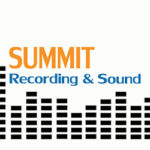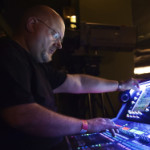Forums › Forums › SQ Forums › SQ general discussions › SQ7 Setting for beginner in church
Tagged: #Beginner settings for SQ7
- This topic has 16 replies, 7 voices, and was last updated 2 years, 10 months ago by
Anonymous.
-
AuthorPosts
-
2021/10/09 at 4:32 am #103892
Moris.Tarigan
ParticipantOur Church just bought an SQ7 for our Church. However, we still face difficulties in putting the right setting for this SQ7. This SQ7 Mixer is used for both offline sound systems in Church and Streaming. Could anyone help give the suggested settings for Pre-Amp, Inputs for Pastor’s Mic, Song Leaders’ mics, Keyboard instrument’s inputs?
So far, we have tried to use the suggested settings that I got from X32 – Collaborate Worship.As an example, our church live streaming voice can be seen in the following link.
2021/10/09 at 10:07 am #103894 ScottParticipant
ScottParticipantThere are no “settings” that people can give you online that will work well. Get your gain’s set correctly by PAFLing one channel at a time and using the main meters. As far as EQ, use your ears. There are way too many variables for EQ that are very specific to your situation. You will need to take the time to do this. You will probably tweak a little each week getting it more and more dialed in as time goes on. Use the scenes to save your settings regularly. Don’t bother with compressors, gates and advanced features until you get the hang of the basics first.
Start by applying high pass filters to everything that doesn’t produce low frequencies. Sweep them up until they start to alter the sound of the input, then back off slightly. After all of the channels have their gains properly set, and their high pass filters properly set, bring up the faders and listen. If a source sounds good, don’t feel that you have to EQ it. If it sounds good leave it alone and move on.
TIP: If you can, use a USB hard drive and record a few services. This will allow you to come back later and tweak things, and compare different settings.
For your stream use an AUX with all of the channels set to POST fader. Start with the faders all at 0db, and go from there. This will make a copy of your main mix and it will follow your main mix. As you discover that you have too much of some things in the stream, switch to that mix and lower those channels slightly. They will still track the main mix, but with those channels being lower than they are for FOH. Again, this will take a little time to get dialed in. Save scenes regularly.
2021/10/09 at 2:50 pm #103902Moris.Tarigan
ParticipantThank you so much, Scott, for your advice. As per your advice for the first start, apply HPF to instruments that don’t produce low frequencies. I don’t do that for Vocal as Vocals may make low frequencies.
Furthermore, for the preamp, I have seen some discussions in this community that I should apply different levels for instruments. For example, if I set the instruments on 0 dB, I need to use +4 dB for Vocal. Is my understanding correct? I thought that the Vocal sometimes did not sound clearly in a mix between the band and the vocals in my church live streaming.
I do thank you for your advice and suggestions.Thank you so much
2021/10/09 at 5:55 pm #103919 ScottParticipant
ScottParticipantI don’t do that for Vocal as Vocals may make low frequencies.
You definitely want to HPF vocals. Minimally leave them at the default 100Hz setting as very few vocals can get below that. I would HPF everything except the bass guitar, and kick drum, and optionally the floor tom, and keys.
2021/10/10 at 2:01 am #103928WaihekeSoundie
ParticipantI think Scott’s advice is very good but I also think you need to go onto Youtube and watch a whole load of videos that explain the basics of live mixing. Watch what other people are doing.
Setting levels, basic EQ, monitor mixes, basic effects such as reverb. They don’t need to be SQ7 related yet– in fact most of the SQ videos are more feature specific than you need.2021/10/10 at 12:13 pm #103934Mike C
ParticipantWhat mixer did you have prior to the SQ?
Is there a true “pro” audio person you could bring in for some
set up and operational one on one training?
Choose that person very carefully!!!We can’t really give you level setting numbers to set your mix up
with, Scott providing some good info to get you started.2021/10/10 at 3:01 pm #103941 Mr-BParticipant
Mr-BParticipantAbsolutely what Mike C said, education is the key. Get some decent training, pay a respected professional to teach you these very basic skills in using a mixer/ PA combination.
These guys make a living using their skills that they have learnt over a considerable amount of time. Those of us that do this would also admit we never stop learning from our piers. Whilst Youtube is an excellent resourse I much prefer face to face instruction.
Ian B.2021/10/10 at 4:26 pm #103942Moris.Tarigan
ParticipantThank you so much, WaihekeSoundie and Mike C, for your advice. Before this SQ7, we used Analogue Mixer MGX 24P – Yamaha since 2008. But most likely, the former sound operators were not familiar with it. Therefore, since it had some issues, our church has decided to replace it. The main reason, this MGX 24P did not support well for Live Streaming.
Before selecting this SQ7, we had done some demo for both Midas M32 and Allen Heath SQ7 by the vendors for comparison. Our offline service and live-streaming service are supported by the sound system and broadband of Vmix. The selection has been made since Midas M32 did not communicate well with Vmix (Video Vmix). We had installed SQ7 in early September 2021, where we have learned some videos and asked the engineer from the AH distributor to train us for basic knowledge about this SQ7. Almost every week, we have done learning by doing.
In the last few weeks, we have used the setting suggested by Collaborate Worship for the Gain and the EQ.
As an example for today Sunday service, we had selected for the followings:
Processing —> All @Pre-amp: vocals, we had selected +18 dB vs keyboard instrument: +14 dB. So, there has been a 4 dB difference.
For Male and Female Voices —> we have downloaded the pre-select factory setting in Library.
HPF is selected at 100 Hz for all voices, including for Keyboard.
All above settings have been stored into Scene for today.So, I found out that the voices heard in YT seem close to lower bass. Maybe it is better to increase the setting for HPF to above 100 Hz. Here is an example of today’s service.
Please give further advice if I need to adjust.
We have hired one sound engineer to train us after our order, but unfortunately, we are not so happy with the results. Therefore, we would like to get insights from the experts.Thanks and BR
Attachments:
You must be logged in to view attached files.2021/10/11 at 10:30 am #103957WaihekeSoundie
ParticipantI’m not a pro and there are lot of people here that know a hella lot more about this than I will ever do but I have been mixing live shows of many different kinds for 15 yrs or so.
One thing I have learned is that you have to use your ears. It is not about 4db between this or that. Or always having these compression settings or these EQ settings. Though pre-sets are often a really good starting point they are just that– a starting point. It’s about what sounds right in this show in the moment.In a live context I often start with presets, but I tone them down. I experiment in soundcheck– “what happens if I bring that vocal up quite a bit? How hight can I roll up the high pass before I lose tone on the guitar or voice — when do I cut into the tone and then I back off..
And I make small changes slowly during the show but I still experiment..
Getting people in to help and train you is fantastic. Do that if you can.
Mostly they will show you HOW to do stuff. And that’s great. What is harder to learn is WHAT to do and WHEN to do it. When I do have a band’s engineer use my gear I watch what they do very carefully and I save the show file and look at afterwards.And I practice.
I take my saved show files from my virtual soundchecks and I practice re-mixing them. Changing settings and seeing what happens.And even better…
A site I have really been enjoying is this one: https://www.telefunken-elektroakustik.com/live-from-the-lab-season%203Here you can download recorded multi-tracks of all sorts of acts. The tracks are generally really well recorded.
I load the tracks into my DAW as stems, I set up my mixer as I would have if it were my show for that band and I play back the tracks from my DAW into that set up as USB inputs as a virtual soundcheck and have a crack at mixing them. Now I can experiment. Safely without artists or an audience.
The good thing is that for all the mixes at the site above (there a a few sessions) there is a mastered mix down of the song to aim at. (I think it is a good thing anyway – lol.
Some I have got pretty near sound wise– others not even close! Some of these recordings have been mixed and mastered very professionally in post.. so be kind to yourself 🙂And start small.. there are some solo and duo acts- try those before working up to the bigger more complex bands. Train your ears to what happens when you play with this stuff.
Hope this helps a bit.
It’s a journey.2021/10/11 at 12:20 pm #103961Mike C
ParticipantI watched some of you video, during the spoken word parts it still sounded like
there was a lot of open mics feeding the live stream.Your overall “room sound” sounds really live / reverberant.
How are you sending the audio to VMIX for live streaming, an analog mix out or using
the USB connection directly to the computer?High pass filter frequencies you listed are a good starting point. Sometimes I will raise a bass guitar or kick drum higher, depending on the system, kind of music, the instrument, the musician, ect.
I never have based my mixing on DB number positions of the preamps or faders. Yes you do need proper overall system gain structure.
I going to guess your over all system could use a going through and some adjustment.
You really do need to bring in a qualified person to go through your system and provide some one on one training and or have then in during a few services to help get things
in order.2021/10/11 at 2:00 pm #103963Moris.Tarigan
ParticipantThank you so much, WaihekeSoundie,
You are right. The settings that I have applied for last Sunday’s service were based on the settings we used a week before. Furthermore, they also depend on the quality of the mics that we have.As per your remarks:
In a live context, I often start with presets, but I tone them down. I experiment in soundcheck– “what happens if I bring that vocal up quite a bit? How high can I roll up the high pass before I lose tone on the guitar or voice — when do I cut into the tone and then I back off.
==> Yes, you are right. In the final adjustment, we have aligned the vocals based on their vocal characters.Thank you so much,
Best Regards,
2021/10/11 at 2:15 pm #103964Moris.Tarigan
ParticipantGood evening Mike,
Thank you so much for all your attention to my case.I watched some of you video, during the spoken word parts it still sounded like
there was a lot of open mics feeding the live stream.
==> In the beginning, we open all the mics that are going to play.Your overall “room sound” sounds really live / reverberant.
==> Our Church room was built with a dome-ceiling room, which creates echoing in the room. It is one of the difficulties we faced for the acoustic to select the proper settings.
Any specific recommendation to overcome such acoustic issues due to a dome-ceiling room?How are you sending the audio to VMIX for live streaming, an analog mix out or using
the USB connection directly to the computer?
==> We connect it using the USB connection directly to the PC.I am going to guess your overall system could use a going through and some adjustment.
You really need to bring in a qualified person to go through your system and provide some one-on-one training and or have them in during a few services to help get things in order.
==> Yes, that’s one of our ideas. But right now, getting a qualified person is still an issue for us. So we are still chasing this person.Again, thank you so much for your advice.
2021/10/12 at 12:15 am #103970Mike C
ParticipantA dome ceiling room!!! Those are about as bad as it can get!!
I have worked a few times in a room that the ceiling is an all glass
dome!!! Not really as easy fix for those.You do need to really only have the mics that are in use at any
given time turned up in the mix with all other mics turned down or muted.
Other wise the open mics are just picking up the room reflections and sending
all of that mush back into the sound system.2021/10/12 at 4:25 am #103972Moris.Tarigan
ParticipantThank you so much, Mike,
Yes, that’s the situation that we have faced.
I am thinking of reducing the echo by using an acoustic silencer (foam).
But I do not know which frequencies it will mute. I need some advice from anyone who knows about this topic.To mute un-required mics, I will take that advice knowing the room brings a lot of reflection.
Best Regards,
MKT
2021/10/12 at 7:37 pm #103980 SteffenRParticipant
SteffenRParticipantit depends on the type of foam you can get your hands on…
there is a special type available it’s called Basotect… try to get some pieces of that
cheap but effective and flame resistant… and it’s white 😉and you can hang it from the ceiling as “cloud”
some examples (sorry, but in German, it was easier to find, look at the pictures to get an impression)
https://myschaumstoff.de/Basotect-Akustik
-
AuthorPosts
- You must be logged in to reply to this topic.